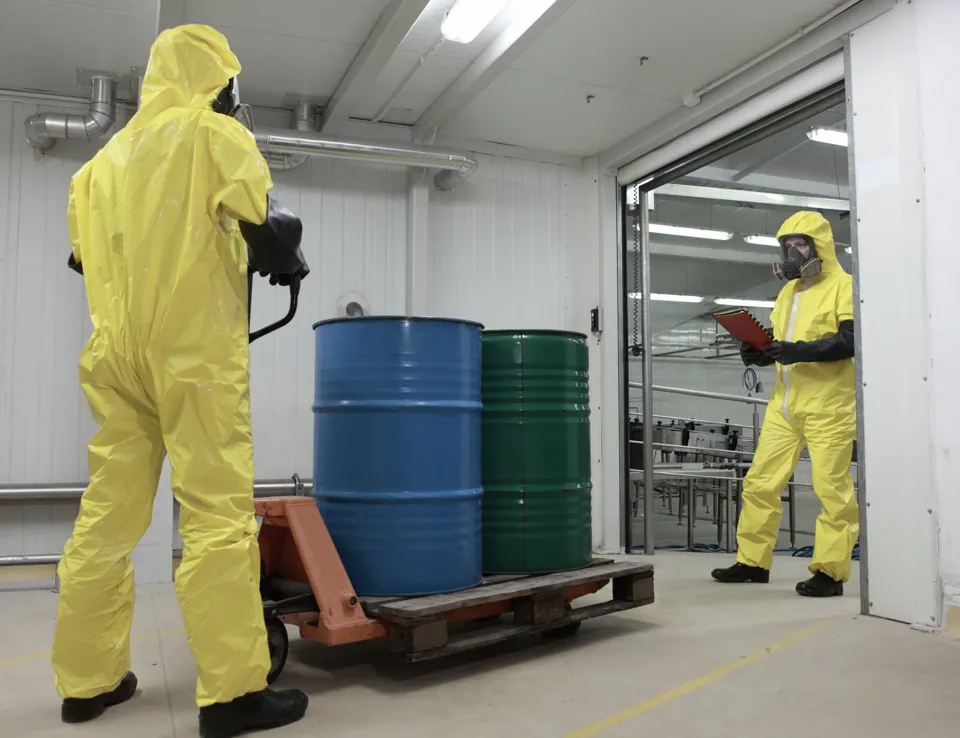
New CLP classifications for endocrine disruptors and other harmful chemicals now published
31 Mar 2023
The European Commission has published revision to the Classification, Labelling and Packaging of substances and mixtures (CLP) regulation introducing new hazard classes for endocrine disruptors and other harmful chemicals. The new classifications must be used for new substances by 1 May 2025, and for new mixtures by 1 May 2026. Substances which are already on the market must be updated by 1 November 2026, and existing mixtures by 1 May 2028.
The introduction of these new hazard classes means a significant proportion of chemicals will come under new regulatory scrutiny and more organisations in the supply chain will have to carry out extended regulatory assessments.
As well as endocrine disruptors, the revision of the CLP regulation covers chemicals which do not break down in the environment and can accumulate in living organisms, or risk entering and spreading across the water cycle, including drinking water. The new classifications are related to known endocrine disruptors, suspected endocrine disruptors, PBT (persistent, bioaccumulative, toxic), vPvB (very persistent, very bioaccumulative), PMT (persistent, mobile, toxic) and vPvM (very persistent, very mobile). This means you will need to conduct highly complex substance assessments. Gathering the data and expert opinion needed to classify against these new criteria will be difficult for many organisations.
You will need expert support to understand if these classifications apply to you and have robust case for your classifications. Where these new classifications apply you will need to update your safety data sheets (SDSs), Labels, Registration, Evaluation, Authorisation and Restriction of Chemicals (REACH) dossiers, and poison centre notifications. Our regulatory experts can act as members of your own regulatory team to help you maintain compliance with all these changes as well as future proof your product portfolio.
Background
This revision is an important deliverable of the Chemicals Strategy for Sustainability (CSS), which is part of the European Green Deal. We have been preparing for the potential impact of these changes and can help you navigate the complexities of them and significantly reduce your compliance costs.
The revision clarifies the rules for labelling, as well as for chemicals sold online. It is the result of extensive scientific discussions and will allow easier access to information for users, especially consumers, workers and businesses. Although businesses may need to invest to comply with the new rules, they will benefit from easier access to up-to-date information on chemicals hazards and from simplified labelling rules.
How Ricardo can support your business?
Identifying which substances in your supply chain will be impacted by these changes is likely to be a challenge for many organisations.
Ricardo's horizon scanning tool can help relieve the burden of the new CLP regulatory changes. It performs a substance inventory check and identifies whether your substances are on any global regulatory lists. It provides the results in a clear easy-to-read report so that you can quickly determine the most recent status of your substances.
The tool determines what your obligations are and what substances need altering before further use, allowing you to make strategic decisions sooner. This also means you are less likely to miss any important actions that result from non-compliance, which not only protects your reputation, but helps you to future-proof your product portfolio.
Ricardo's environmental chemistry and toxicology team have extensive experience with the standard and non-standard approaches to assessing physicochemical, toxicological and environmental fate endpoints. We have the knowledge and expertise to help you navigate these proposed and highly complex assessment requirements.
We are already supporting our customers with all aspects of EU and UK REACH registration including Only Representative support. We can help you prepare your dossiers and make sure that all the information within them is permissible under REACH. We also offer full SDS authoring and compliance checks as well as a poison centre notification service.
We recently published a report as part of a series produced for the Cefic Long-Range Research Initiative (LRI) ECO52 project: Expanding the conceptual principles and applicability domain of persistence screening and prioritization frameworks, including single constituents, polymers, and UVCBs. The report presents background to the regulatory persistence assessment, including concepts, history and recent developments. It also has guidance for addressing key sources of variability including environmental and experimental factors, with particular focus on bioavailability, the sediment compartment, and environmental realism, as well as a framework for improving the use of weight of evidence in these assessments. You can access the ECO52 project page with all reports here.
Our experts also offer a bespoke consultancy service to advise your organisation on the next steps to help you navigate the constantly changing regulatory landscape.
Learn more about our chemical regulatory consultancy services >




 Follow Ricardo Chemical Solutions for regular updates
Follow Ricardo Chemical Solutions for regular updates




